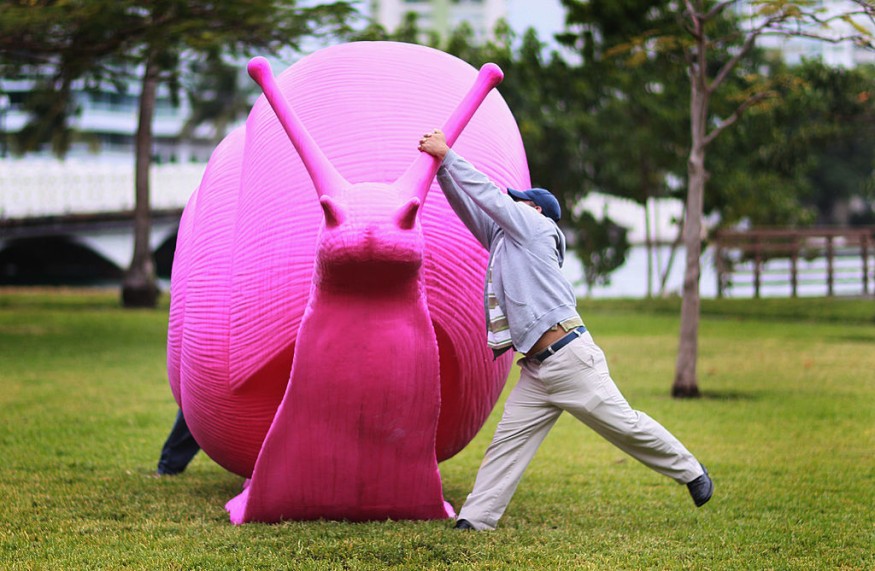Erasing recollections of wronged lovers is no more just a cinematic trend popularized in Eternal Sunshine of the Spotless Mind. A few other neuron specialists say that specialists may wash away individual memories. It could be more plausible than it seems, for snails, at least.
Researchers have been modifying, transferring, and removing animal memories for at least 25 years. Indeed, scientists attempted to classically condition snails in the 1980s (remember, Pavlov's dogs). Scientists believe that this particular storyline of the Black Mirror episode was to discover a solution for psychiatric and neurological stressors.

MIAMI BEACH, FL - DECEMBER 09: Agostino Pezzatini (L) and Luiz Menezes help push one of the pink snails in an art installation into place on December 9, 2010, in Miami Beach, Florida. Some of the 45 snails have been beaten, battered, sprayed with graffiti, and thrown into Biscayne Bay since they were installed in mid-November by an international artist collective, Cracking Art Group and Italy's Galleria Ca d'Oro. Gloria Porcella, who owns Galleria Ca' d'Oro, which is sponsoring the snails, says that they are periodically moved from one location to another and that the snails have been on display in Rome and Paris without the levels of vandalism she's seen in Miami Beach. She hopes there'll be no more incidents before the public show ends on January 3.
Why Is It Just For Snails? We Have Something We Want To Forget, Too!
they are really fuckin these snails up pic.twitter.com/08JxylKYA9
— Neeraj K. Agrawal (@NeerajKA) January 13, 2021
In a 2018 interview with CNN, Professor David L. Glanzman of the Department of Integrative Biology and Physiology of UCLA clarified that snails have certain benefits since they have very straightforward nervous systems as human brains are complex.
As for why snails provide such common subjects, a 2012 Scientific American article snails' interactions can be quickly and closely monitored and still have giant neurons making it simpler to study.
In 2017, Vice.com's Motherboard claimed that researchers are unaware of how long this erasure would continue. However, the study is promising since the work involves transferring neurons from snail to person.
Dr. Glanzman told CNN that researchers might use the study's experience to develop innovative and more reliable therapies for human memory diseases, such as Alzheimer's disease, schizophrenia, and PTSD.
While we are heading away from complete regulation of the mechanism of memory-making à la escargot, such snails have shed light on neurological science's future. May they be honored for their scientific achievements.
What Does It Mean for Humans?

It is interesting to learn about memory transition and transplantation. But only because it works on snails doesn't imply that we can soon exist in the "Westworld" setting.
Given positive motives, there is justification to continue with caution if we've heard something from some movie about substances that screw with the head.
Experts claim that the analysis provided a clearer explanation of how memories are mechanically shaped in nervous system components (including the brain) that might contribute to a better explanation of memory-related illnesses.
The results even bring into doubt certain traditional understandings about how memory is processed.
Today, the prevailing paradigm of learning and neuroscience is that any animal discovers something, new synaptic associations, or shift in current ones, Glanzman stated. Memory is then retained in synapses.
Check out more news and information on Memory in Science Times.
© 2025 ScienceTimes.com All rights reserved. Do not reproduce without permission. The window to the world of Science Times.












